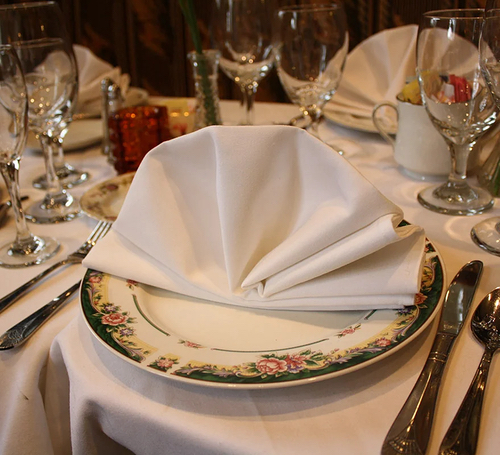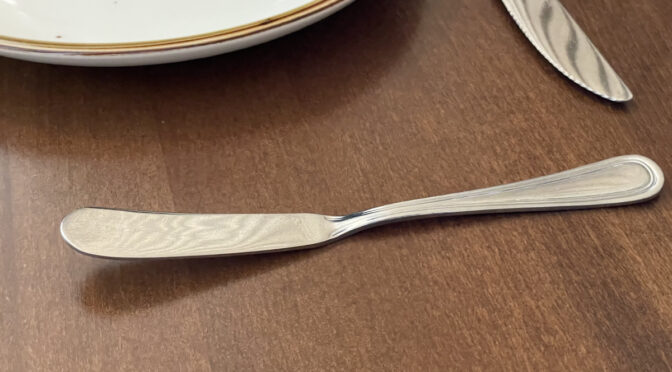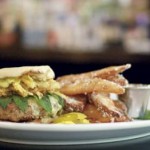By Robin Garr
LouisvilleHotBytes.com
I’m still hearing from readers about my comments in last week’s review about the quality furnishings and spotless, seemingly hand-polished silverware at Perso restaurant in Shelby Park: “Those seemingly smaller signals of attentiveness and care from the moment we sat down signaled management that cares.”
In a way, we could liken dining out to a theater performance: Good food might be the lead actor, a player who struts and frets their hour upon the stage. But from decor and drinks to service and even the restrooms, it takes a quality supporting cast to turn a meal into an unforgettable show.
Dining out is not just about filling our bellies. It’s an overall experience that tantalizes our senses and leaves us with memories. This week let’s dig a little deeper into all this, examining some of the many factors beyond food that can make or break our dining experience.
Ambience and Decor
“Ambience.” There’s a word that often gets overused and incorrectly used. It’s a fancy word that even has a twin: You can spell it “ambiance,” and that’s all right too. A little fuzzy in meaning, it defines the defining character or mood of a place, its atmosphere.
I liked Perso’s ambience not because it has the hushed, upscale mood of an old-school gentlemen’s club. (Hint, it doesn’t.) Rather, as I wrote in its praise, it shows a unified aesthetic that extends from its 19th century red-brick building to its simple style, decor, that shiny tableware, its convivial, welcoming mood, and, of course, its cuisine.

What makes ambience work on a restaurant’s behalf? Honesty, sincerity, and a look and feel that fits the mood. Just about every place you go has ambience, although there’s no guarantee it will suit your personal tastes. A stylish, upscale place like 211 Clover or Buck’s will own a ton of it, but bear in mind that a fried-fish house like The Fishery or The Fish House will too, with a nautical look and feel in a more downscale setting.
Check’s Cafe and Vietnam Kitchen each boast a ton of ambience with their neighborhood feel and a look that fits their heritage. Jack Fry’s wins with its comfortable old-school mood and historic photos, and Vincenzo’s scores with quiet, upscale elegance. Every place brings its own mood, and that’s as it should be.
Sound level and noise
As I discussed in a recent article (What Kind of Noise Annoys a Diner, June 12, 2024) ear-shattering noise can be one of the most annoying elements of a dining experience. If you can’t hear your companion, can’t carry on a conversation, or even, in the worst case, can’t hear yourself think, you’re not having a good experience.
But a restaurant so hushed that you feel awkward about speaking to your neighbor feels creepy, too. The pleasant but not deafening buzz of happy diners around the room is generally ideal, and again, what’s right for one eatery may be all wrong for another. Drop in on a sports bar with a major game on the screens, and I’m pretty sure no one expects silence, particularly after a key three-pointer or exciting soccer goal.
Service
Good service can make a dining experience, and poor service can most assuredly break it. In a social-media conversation about the small things other than food that can make a dining experience exceptionally good or exceptionally bad, service drew by far the majority of comments. A server who wants to help is good, many pointed out. One who wants to flirt or just be too cute, not so much. Eye contact and sincerity get plus marks, as do good timing. It can be challenging for a server to strike a balance between being attentive and being a hovering pest, but it’s worth the effort.
Owners, managers, or chefs who take time to come around and speak to diners at every table come in for applause. Edward Lee at Nami, Vincenzo Gabriele at Vincenzo’s, and the recently retired Anoosh Shariat at Shariat’s (now Äta) came in for special praise for their regular commitment to checking in with diners.
But wait! There’s more!
Briefly told, we’ve still just scratched the surface of non-food issues that can improve or spoil our dinner out.
- Price and Value: No matter what we think about it, some restaurant meals are going to command higher prices than others. It’s not as simple as the basic difference between, say, a $150 cut of wagyu beef and a $10 diner burger, although food costs are clearly a big factor. Real estate and lease prices, paying big-name chefs and purchasing quality ingredients,, investing in fancy furniture and elegant decor, and many other variables all contribute to the difference in cost between a neighborhood joint and a four-star, white-tablecloth eatery. For most of us, though, the issue isn’t as much the total of the tab as whether we feel we got our money’s worth.
- Menu variety and options: Go to a steak house, expect a steak. Go to a fish house, get seafood. That seems logical enough, but in modern society there’s value in being attentive to the family with a carnivorous wife, vegan husband, and the kids who needs something gluten- or lactose-free. Going the extra mile suggests offering a couple of different vegan and other options that are just as creative and interesting as the rest of the menu. A platter of three side dishes may be technically vegetarian, but it’s not particularly interesting.
- Cleanliness: Do I even need to mention this? If the dining room smells funny or looks dirty, your table mat bears a smear of something unidentifiable, or the server comes out with their thumb in your soup, you’ll be mad. And so, eventually, will the health inspector.
“Don’t sweat the small stuff?” That’s very bad advice if you run a restaurant.




